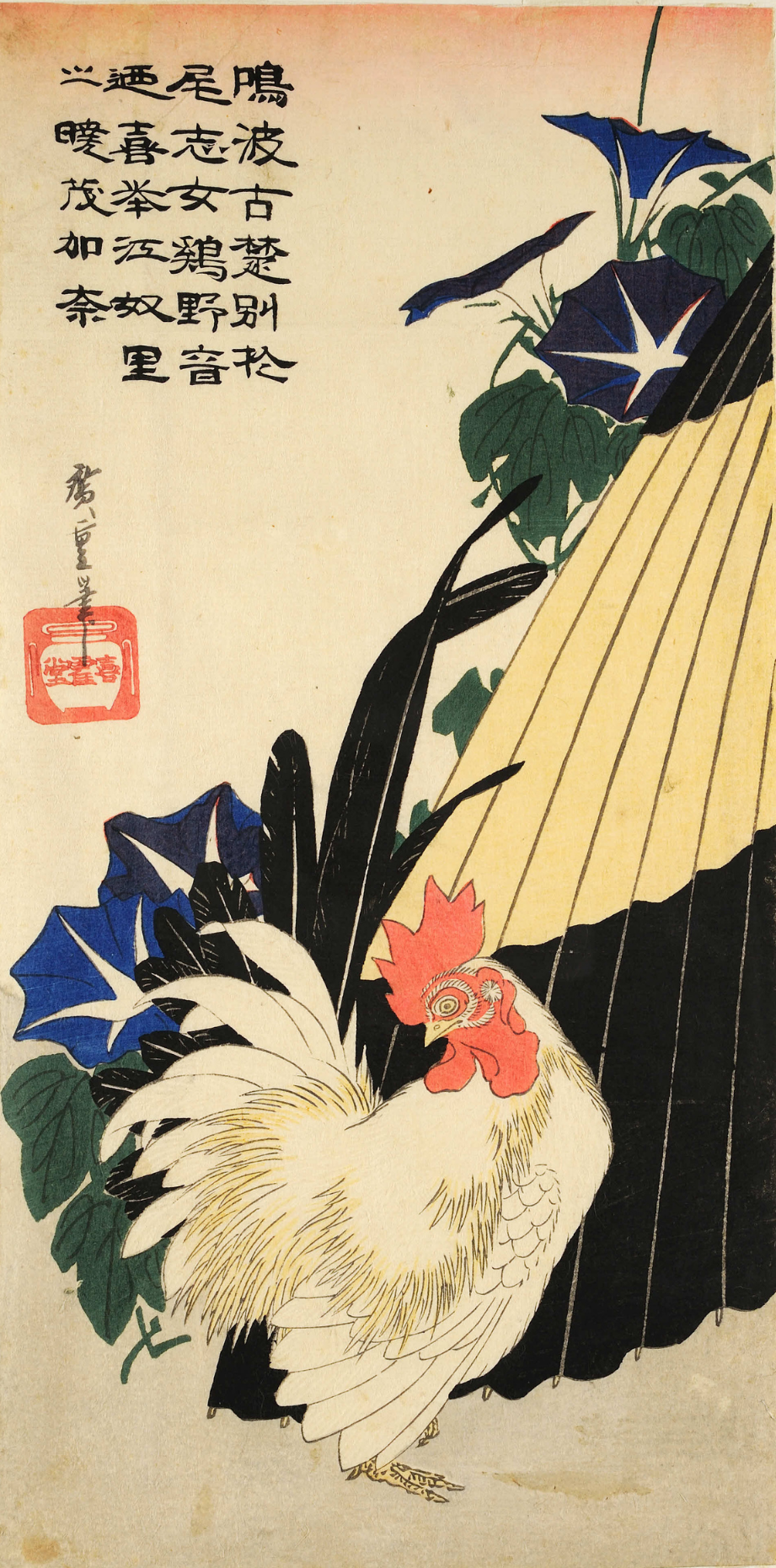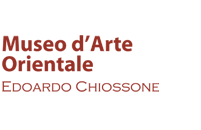
Click here to view image
Utagawa Hiroshige, Japan, Edo period (1603-1868)
Polychrome woodprint
Nishikie polychrome woodprint with karazuri impression. 35,4 x 17,9 cm
This print, datable 1830-1831, is set in the early morning of a summer day, which can be understood analysing the different elements. The rooster is the protagonist, symbol of the morning awakening, royal and motionless, in a delicate pose; the bright red of the crest and the dirty white of the feathers are really highlighted.
The Morning glory behind him, in Japanese “asagao” (朝顔)“the face of the morning” contrasts the background with its intense blue and symbolizes the end of the night, because it has a particular characteristic: it withers during the night and blooms again during the morning in the summertime. Being a climbing and weeding plant, the bindweed blooms wherever it finds a wall to lean on: this is why it was very appreciated and used in Japan for decorative purposes.
The third element is the yellow and black umbrella, of which only a side can be seen. Known as “janomegasa” (蛇の目傘)” bull’s eye umbrella”, because of his decoration of coloured circles, it is used to shelter from the rain during the rainy season tsuyu (梅雨), that happens in Japan from early June to the middle of July: this is the same period of the bindweed’s flowering.
The rooster is not well seen in classical poetry and in ladies’ diaries in the Heian period: indeed, its morning call interrupted the lovers' passionate night meetings.
Finding the umbrella open and resting on the ground, we can imagine that nearby there are the two lovers, at which the poem reported in the print alludes, who struggle to separate after the night spent together. As the verses written in Chinese style in the upper left say, the two lovers sigh "how beautiful would be the dawn of a country where the rooster would not be heard!".
We therefore understand that the rooster - usually depicted with a swollen chest while making its call - in this print remains silent, refraining from giving lovers the regret of having to divide.
Here is the complete composition, which perfectly represents the function of the rooster.
鳴けばこそ / 別れを押し目 / 鶏の音の / 聞こえぬ里の / 暁悲しも
nakeba koso / wakare mo oshime / tori no ne no / kikoenu sato no / akatsuki kanashi mo
Reluctantly we part at the rooster’s singing: how beautiful would be the dawn of a country where the rooster would not be heard!




